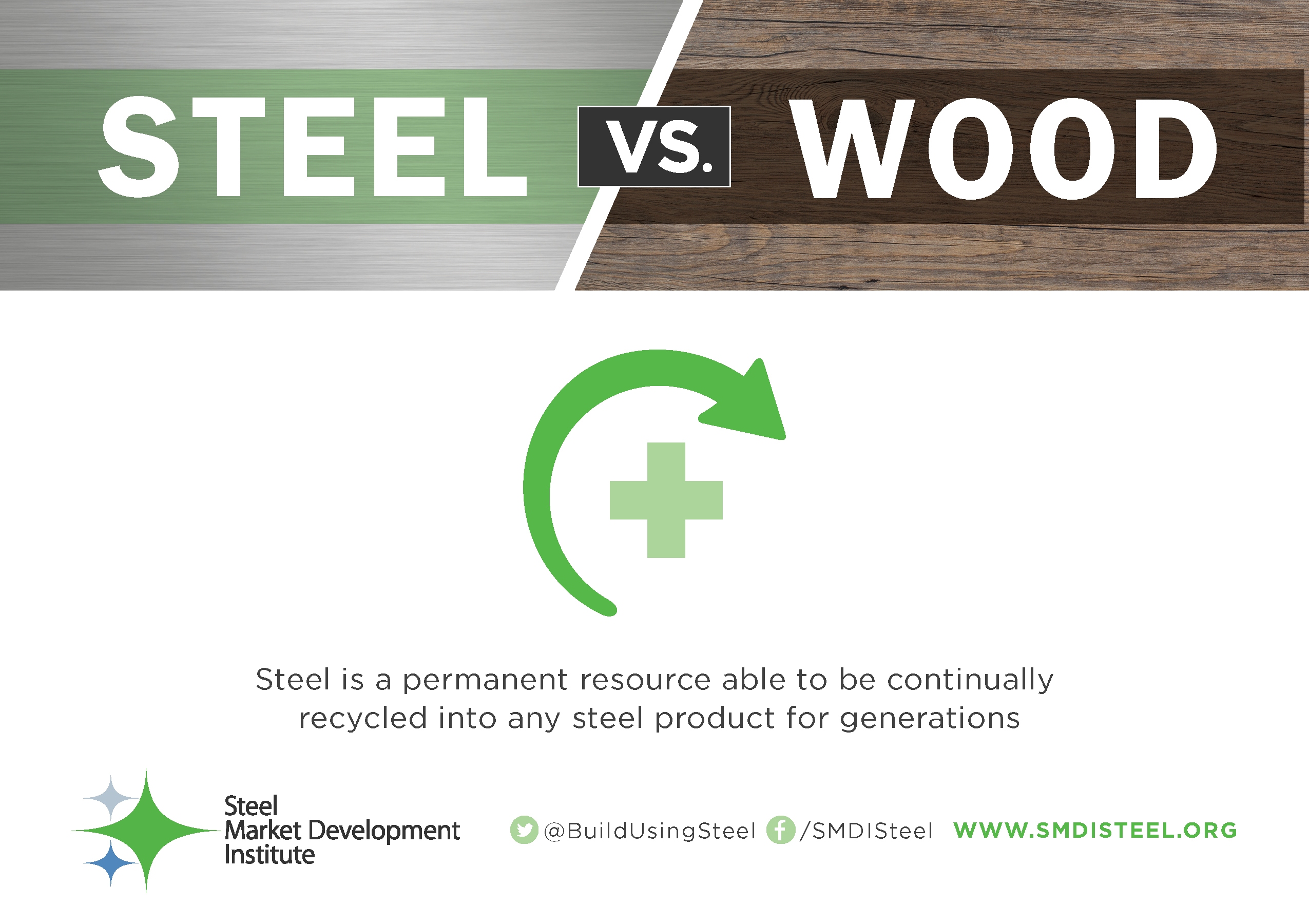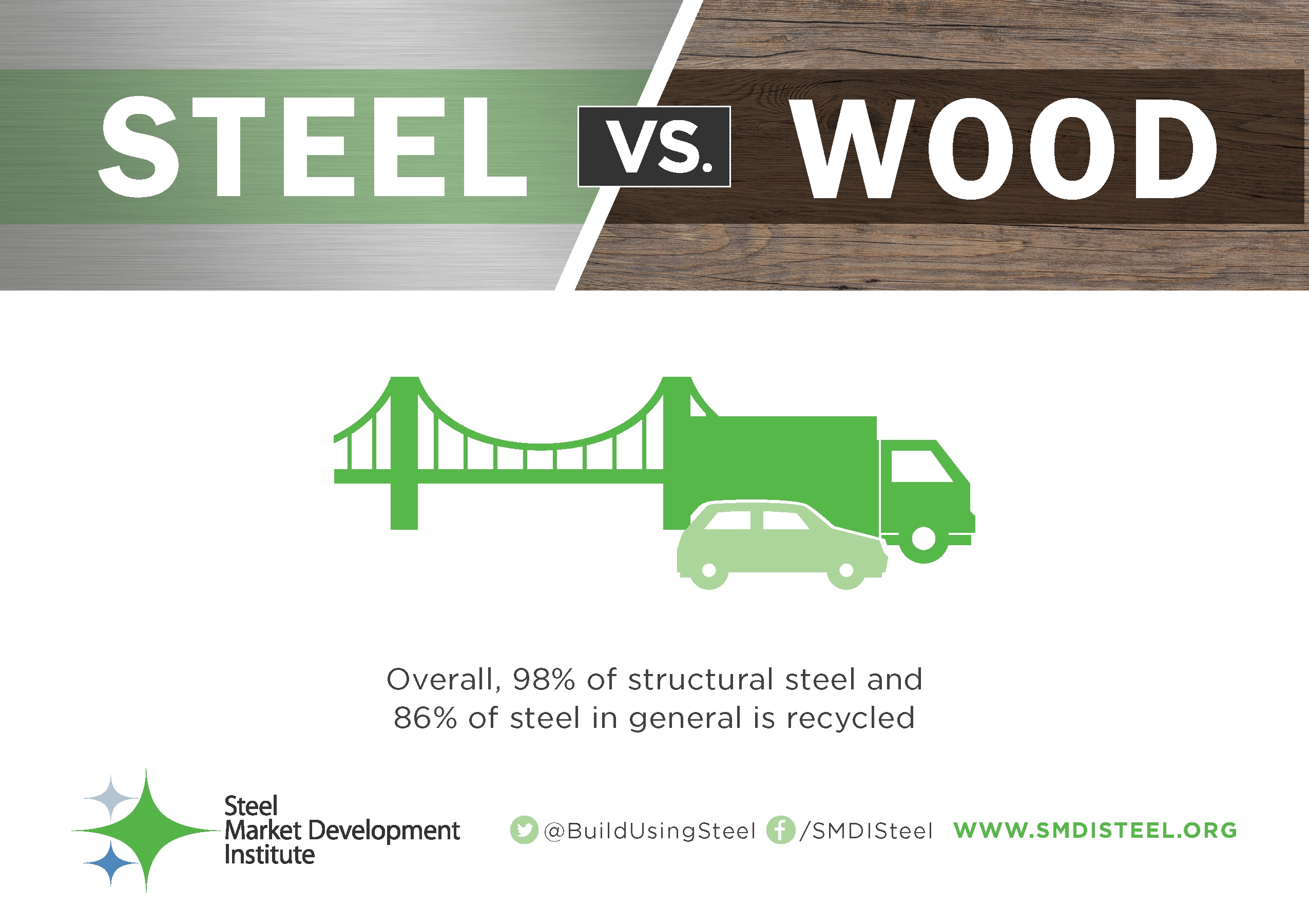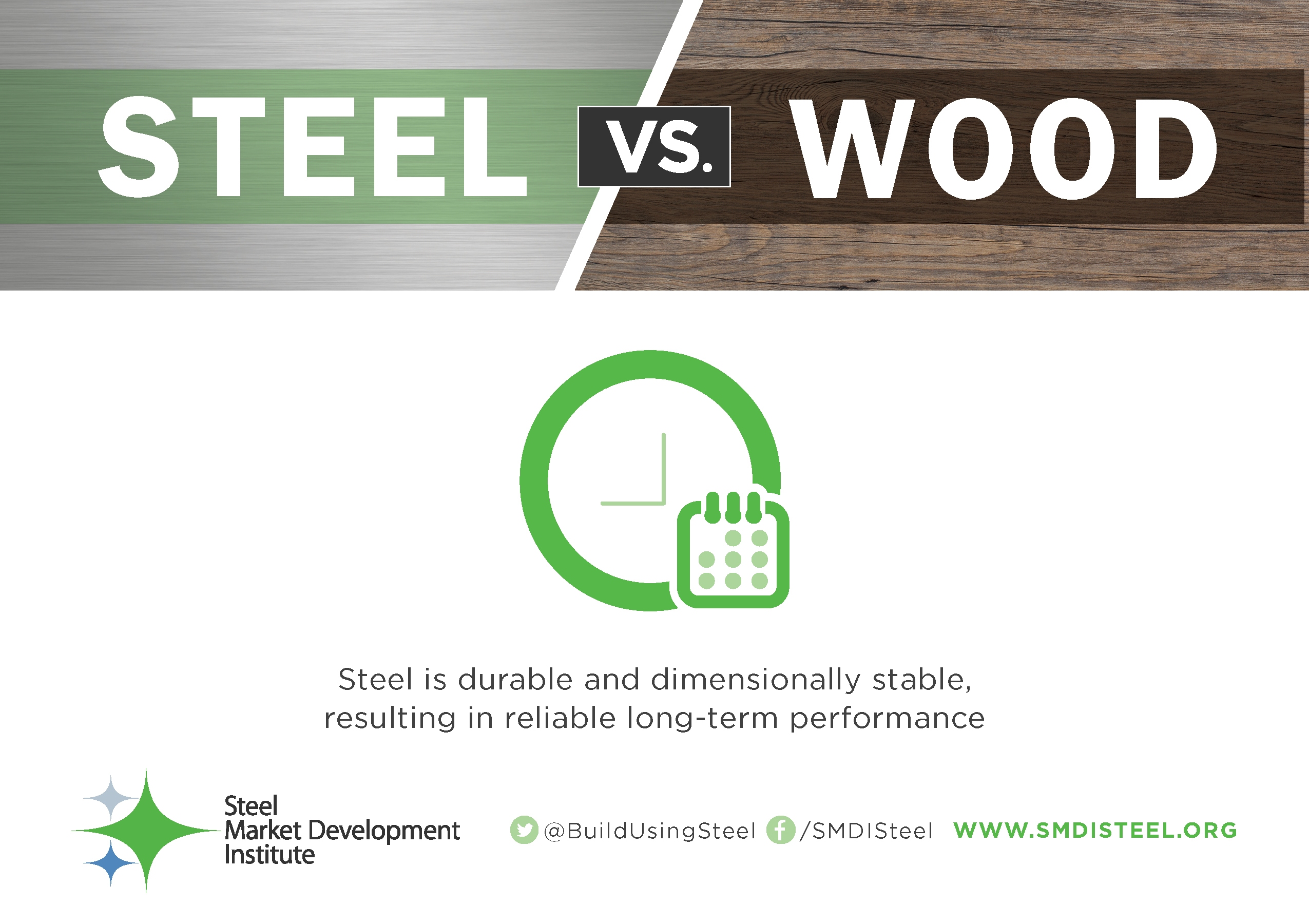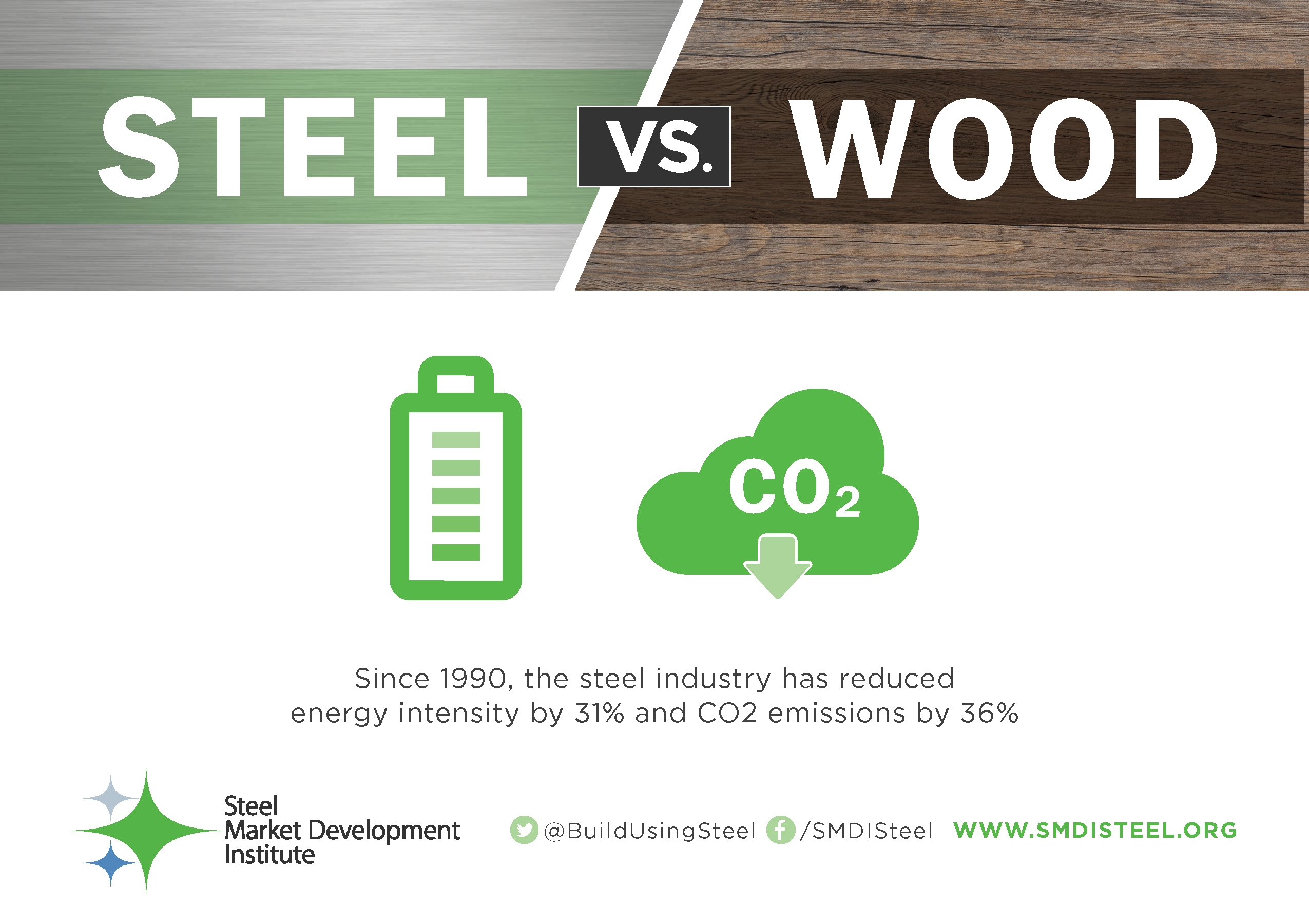The Economic Value of Steel

Steel is one of the most commonly used materials in the world, and for good reason. As a building material, steel has a number of benefits, including its economic value. Steel construction products are often fabricated off-site, which reduces on-site labor costs, shortening cycle time and reducing construction waste. Steel products can add longevity and reduce maintenance costs when compared to other construction materials - all providing builders with value for their bottom line.



Builders risk insurance is always a topic of discussion when it comes to buildings and construction. Using steel can result in significant cost savings. For example, builders risk insurance on a four story, 400-unit hotel built over 24 months cost $360,000 for steel framing. Insurance for the same building constructed with wood would have cost $1.6 million. (Source)

Steel construction products are typically manufactured to exact dimensions, minimizing jobsite waste. This accuracy and precision in manufacturing often allows other trades to get to work sooner, enabling the developer to begin collecting rent earlier than expected.
Off-site fabrication leads to decreased construction cycle times. This leads to decreased labor costs, earlier occupancies and lower financing costs, all adding up to economic value for construction professionals and building owners.

Steel roofing also offers significant economic value for construction projects. The durability of steel roofs lead to lifespans of 60 years or more and little to no required maintenance. This durability can also contribute to reduced insurance costs and chances of damage due to severe weather. All of these properties can contribute to the increased resale value of a building.